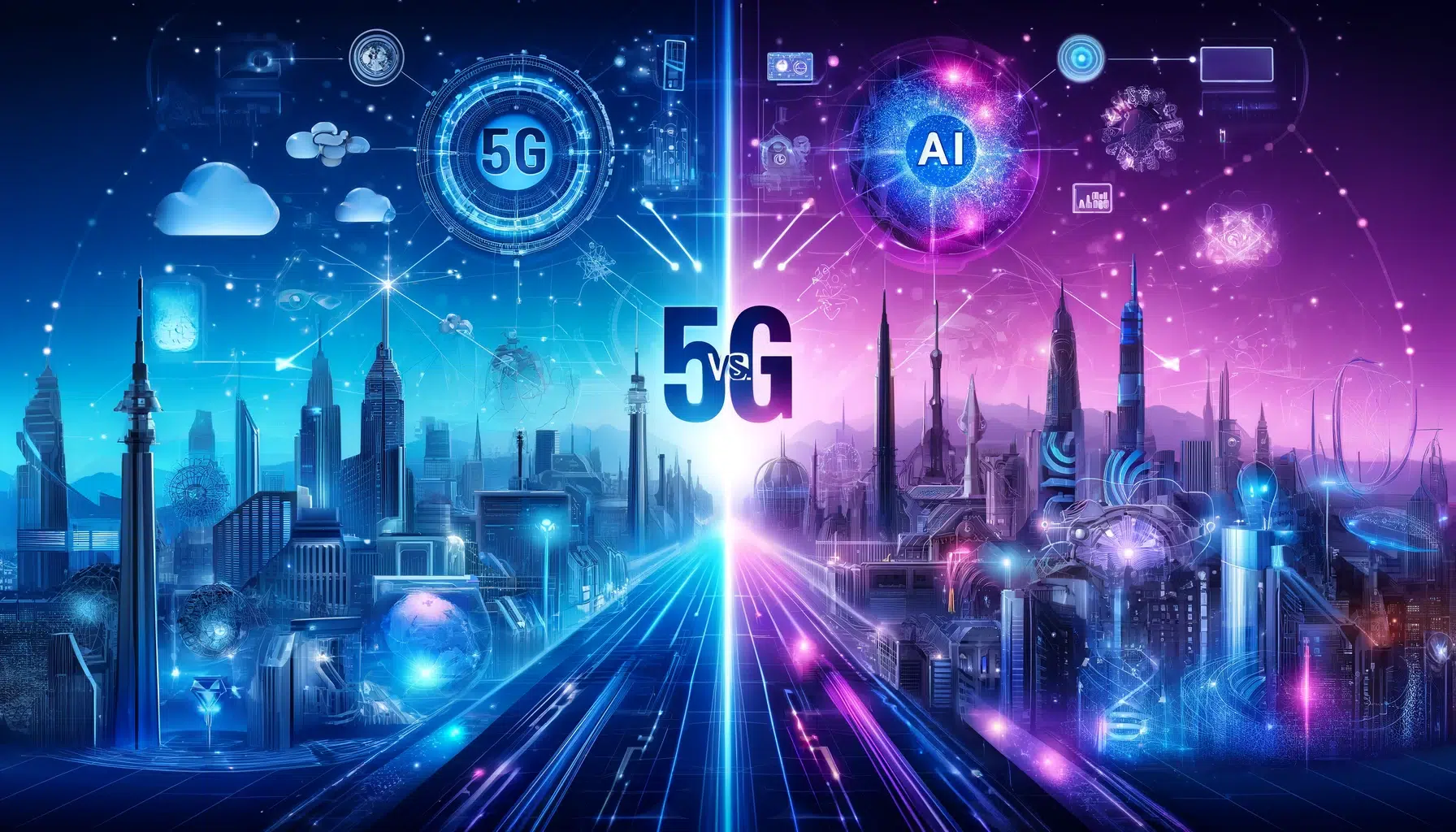The world of mobile networks has been evolving at an astonishing pace, with each new generation bringing transformative changes. The launch of 5G has significantly improved speed, reliability, and connectivity across the globe, impacting industries from healthcare to entertainment. But as we enjoy the benefits of 5G, discussions around the next generation—6G—are already underway. In this article, we’ll explore the key differences between 5G and 6G, what advancements we can expect, and how 6G might change our digital landscape in the coming years.
What is 5G?
5G, the fifth generation of mobile networks, was introduced to the public around 2019. It promised faster speeds, lower latency, and higher capacity, allowing for more devices to connect simultaneously without compromising performance. With download speeds that can reach up to 10 Gbps, 5G has enabled applications like augmented reality (AR), virtual reality (VR), and smart city technologies, transforming how we interact with the digital world.
Key Benefits of 5G:
Enhanced Speed and Bandwidth: 5G can handle up to 100 times more traffic than 4G, with significantly faster data speeds.
Ultra-Low Latency: 5G’s latency is as low as 1 millisecond, making real-time applications possible, particularly for gaming, remote surgery, and autonomous driving.
Greater Connectivity: With 5G, more devices can connect seamlessly, which is essential for the Internet of Things (IoT).
What is 6G?
6G is the next frontier in mobile networks, with commercial deployment expected around 2030. While it’s still in the research phase, 6G promises to build upon the advancements of 5G and push the boundaries of connectivity even further. It aims to deliver speeds up to 100 times faster than 5G, ultra-low latency that could be measured in microseconds, and even more robust connectivity for a wide range of devices.
Potential Benefits of 6G:
Terahertz Frequencies: While 5G operates on frequencies up to 100 GHz, 6G will likely use frequencies in the terahertz range, allowing for dramatically increased bandwidth.
AI Integration: 6G is expected to heavily rely on AI to manage networks more efficiently and deliver personalized services in real time.
Holographic Communication: With ultra-high speeds and low latency, 6G could enable holographic communication, making virtual interactions feel more lifelike.
Key Differences Between 5G and 6G
1. Speed and Bandwidth:
5G: Capable of reaching speeds of up to 10 Gbps.
6G: Expected to exceed 1 Tbps, making it up to 100 times faster than 5G.
2. Latency:
5G: Latency is around 1 millisecond.
6G: Projected latency could be as low as 1 microsecond, enabling instantaneous communication.
3. Frequency Spectrum:
5G: Operates up to 100 GHz.
6G: Expected to use the terahertz spectrum, ranging between 100 GHz and 10 THz, for greater data transfer capabilities.
4. Network Intelligence:
5G: Supports basic AI capabilities for network management.
6G: Will likely have AI as an integral component for managing network resources dynamically and autonomously.
5. Connectivity Capabilities:
5G: Connects billions of devices, particularly beneficial for IoT.
6G: Could potentially connect trillions of devices, supporting hyper-connectivity on a scale we haven’t seen before.
What Will 6G Enable?
The advancements promised by 6G could revolutionize a wide range of industries. Here are a few potential applications:
Smart Cities and Infrastructure: With 6G, cities could leverage real-time data at an unprecedented scale, making everything from traffic control to energy management far more efficient.
Telemedicine and Remote Surgery: While 5G has already made remote surgery a reality, 6G’s ultra-low latency could make these procedures even more precise and reliable, allowing for broader adoption.
Holographic Communication and XR: The bandwidth and speed of 6G may enable holographic communication and extended reality (XR), allowing for immersive experiences that could redefine communication and entertainment.
Environmental Monitoring: With the ability to connect trillions of sensors, 6G could provide real-time monitoring of environmental factors, helping to track climate change and monitor pollution at a granular level.
Challenges Ahead for 6G
While 6G holds immense promise, there are also challenges to address:
Infrastructure and Costs: Building a 6G infrastructure will require significant investments. It’s likely that governments and companies will need to collaborate to fund and develop the necessary technology.
Privacy and Security: As connectivity grows, so do the risks associated with data privacy and security. Developing robust security measures for 6G will be crucial.
Health Concerns: Higher frequencies in the terahertz range may raise health concerns. Comprehensive research and regulations will be necessary to ensure public safety.
Conclusion: The Future of Mobile Networks
As 5G continues to roll out globally, the groundwork is being laid for the development of 6G. While 5G has brought us incredible advances, 6G is set to redefine the boundaries of what’s possible in mobile connectivity. From terahertz frequencies to AI-driven networks, the sixth generation of mobile networks could transform industries and daily life in ways we can only begin to imagine.
The journey from 5G to 6G will undoubtedly present challenges, but with each new generation, we inch closer to a world where seamless, instant communication and connectivity are the norm. Whether it’s smart cities, telemedicine, or immersive entertainment, 6G promises to bring us a step closer to the future.
This article includes relevant keywords like “5G vs. 6G,” “mobile networks,” “future of connectivity,” and specific features of both technologies. These will help improve its search engine ranking.

